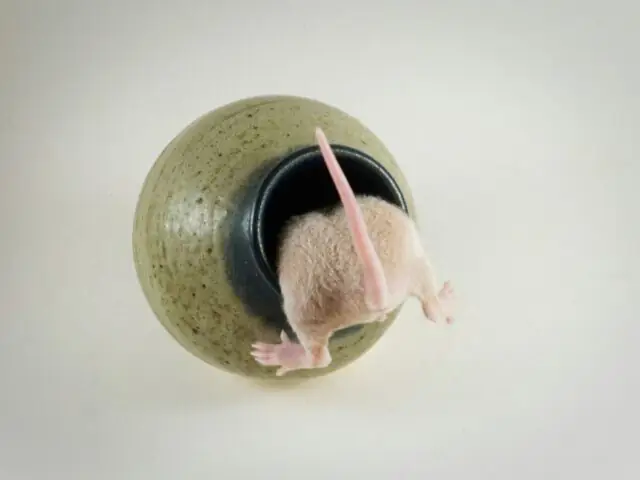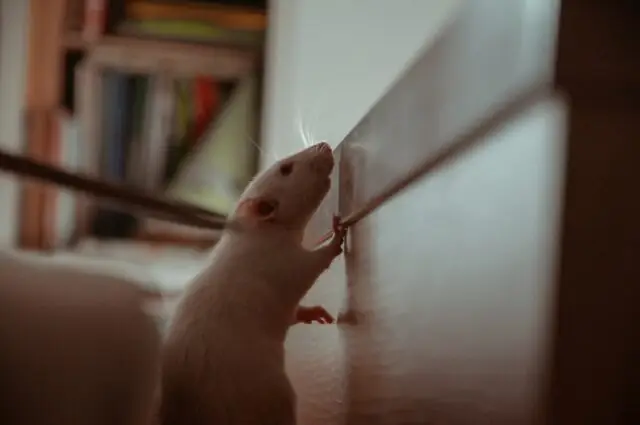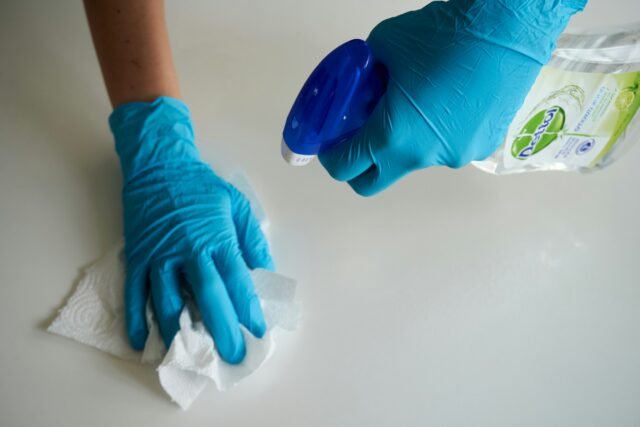Published: by Paula Kioko, Marketing Associate
A guide on how to stop rodent infestations. And what to do if you have one.

It is never a good sign to find mice in your kitchen. The situation is even worse if that kitchen belongs to your restaurant.
Not only is it frustrating not knowing where and how they got access to your premises, but the reaction it could elicit from your customers if a rodent makes an appearance during dinner service is horrifying.
We are by no means, rodent experts, but rumour has it that mice do not travel far from their nests. So, spotting one mouse is a strong indicator that there are likely more nearby.
What are the signs of rodents in restaurants?
Recognising signs of rodents in restaurants is crucial.
These creatures are skilled at finding food and shelter, and they are particularly drawn to warmth or the scent of food emanating from areas like ovens, supply closet, delivery zones, and dumpsters. These act as motivation to squeeze through the tiniest of openings.
So, the first step would be to identify whether you have any unwanted guests. Clear signs of rodents include:
- Gnaw marks. A clear telltale sign that your restaurant may be hosting mice is little gnaw marks. Rats and mice gnaw to create better access points.
- Mice droppings. About the size of a grain of rice.
- Rub marks. Dirty grease marks along your walls
- Damaged items. Similar to gnaw marks, mice may nibble on furniture, wires and other items
- Actual sightings. Mice do not travel far from their nests. So, the sight of one is enough to take action as it is highly likely there are many more nearby.
Rodents are most likely to gain access into your premises through food packaging, broken air bricks, windows, missing roof tiles or slates, drainage systems, and doors being left or propped open.
Can mice contaminate food?
Yes, there is a significant reason to be concerned about rodents in your premises.
The Centres for Disease Control and Prevention (CDC) warn that certain diseases can spread from rodents to humans through direct or indirect contact:
- Salmonellosis – this bacterial infection is contracted by consuming contaminated food or water. Symptoms include diarrhoea, fever and stomach cramps which usually begin six hours to six days after infection and last four to seven days.
- Plague – this bacterial infection can be contracted through a rodent flea bite carrying the plague bacterium or by handling an infected animal. Without treatment, plague can be fatal and cause damage to various organs.
- Hantavirus – each hantavirus is associated with a specific rodent host species. The disease spreads through direct contact or inhaling particles from rodent urine, faeces, and saliva. Although less common, it can also be transmitted through a bite from an infected host.
- Rat-bite Fever (RBF) – contracted by consuming food or water contaminated with the urine and droppings of rodents carrying the bacteria. RBF symptoms include fever, vomiting, headache, muscle pain, joint pain and rash. Without treatment, RBF can be severe or even fatal.

What will the Environmental Health Officers or food premises inspectors expect to see?
In any event, Environmental Health Officers (EHO) or food premises inspectors will be looking for specific actions if an mice infestation is identified.
- Prompt action. If the Food Safety team from the Council has identified an infestation, prompt action is essential. You may need to temporarily close your premises to facilitate effective treatment.
- Voluntary closure. While opting for voluntary closure might seem counter intuitive, it’s preferable to the negative publicity and court appearances that often result from formal notices, not to mention the associated costs.
Please note that while the voluntary closure may help avoid the issue of an Emergency Hygiene Protection Notice, this informal route may become less likely if there’s evidence that staff have noticed signs of activity, but the business continues to operate nonetheless. - Engagement of pest control. After employing a pest control contractor, the Council officers will anticipate seeing a completed pest control logbook from the contractor. It’s important to address any housekeeping recommendations noted in the logbook.
- Confirmation of treatment. Additionally, officers expect to be notified when the contractor confirms the success of treatment.
- Risk of prosecution. Finally, when an EHO finds it necessary to serve a closure notice to premises, they are more inclined to pursue prosecution against the business owners due to the failures that led to the closure.
Interview under caution
If you find yourself subject to a thorough investigation, you’ll likely receive notification of an intention to conduct an interview under caution. During this interview, the focus will be on examining the failures in systems and training that led to the infestation.
From the operator’s perspective, this interview is a critical part of the investigative process. It offers an opportunity to thoroughly investigate the incident and showcase the extensive systems of training, cleaning, and auditing in place to prevent such occurrences.
Moreover, it’s a chance to outline any remedial actions taken to minimise the likelihood of similar situations in the future. Seeking legal advice at this stage is essential to ensure that the operator’s case is presented as comprehensively as possible, with the aim of potentially avoiding prosecution.

The risk of mice infestation on your business
Mouse infestation poses significant risks to your premises, going beyond the initial closure impact.
Recent sentencing guidelines emphasise ‘sending a clear message to the board’ regarding financial penalties. This could result in fines ranging from tens to hundreds of thousands of pounds, depending on the organisation’s size and various factors like culpability and harm identified during investigations.
Moreover, there’s the added risk of negative publicity, which can further harm your business. Potential and existing customers may be deterred from visiting your premises due to concerns about health and safety.
What should your premises be doing to prevent this?
Lack of proper cleaning and the presence of mice or other pests normally go hand in hand and it is therefore imperative that any business invests time and money in ensuring that they have adequate preventative systems.
This means that the issues of proper cleaning and pest control need to appear prominently in any Food Safety Policy, with staff also being given adequate training on that policy and on their general food safety responsibilities.
Staff training
Staff must be trained to spot the signs of pests and to take appropriate action should their presence be detected. It may be that in the worst scenarios, a business has to take the bold decision to close the kitchen in order for proper pest proofing and cleaning to take place.
Pest control contract
A pest control contract is imperative with a clear process of escalation of the contractor’s involvement should evidence of pests be detected. The responsibility for spotting pest activity should not rest solely with the contractor as they will only visit the premises infrequently until such time as a significant problem is discovered.

How our regulatory solicitors can help
Our licensing solicitors not only guide on acquiring premises licence but also hold extensive experience in providing legal advice in the hospitality industry.
A single complaint from a customer or a random inspection from an environmental health officer can lead to a highly detailed inspection of the hygiene and cleanliness of your kitchen and bar. With detailed knowledge of the procedures, we can provide expert advice at every stage, including;
- Gathering evidence
- Interviews under caution
- Providing written statements
- Representing you at court
For additional information on how our licensing solicitors can help you, please feel free to contact the team or partner and head of regulatory, Graeme Cushion.
Printable PDF
Download a printable version of this document using the link below.

